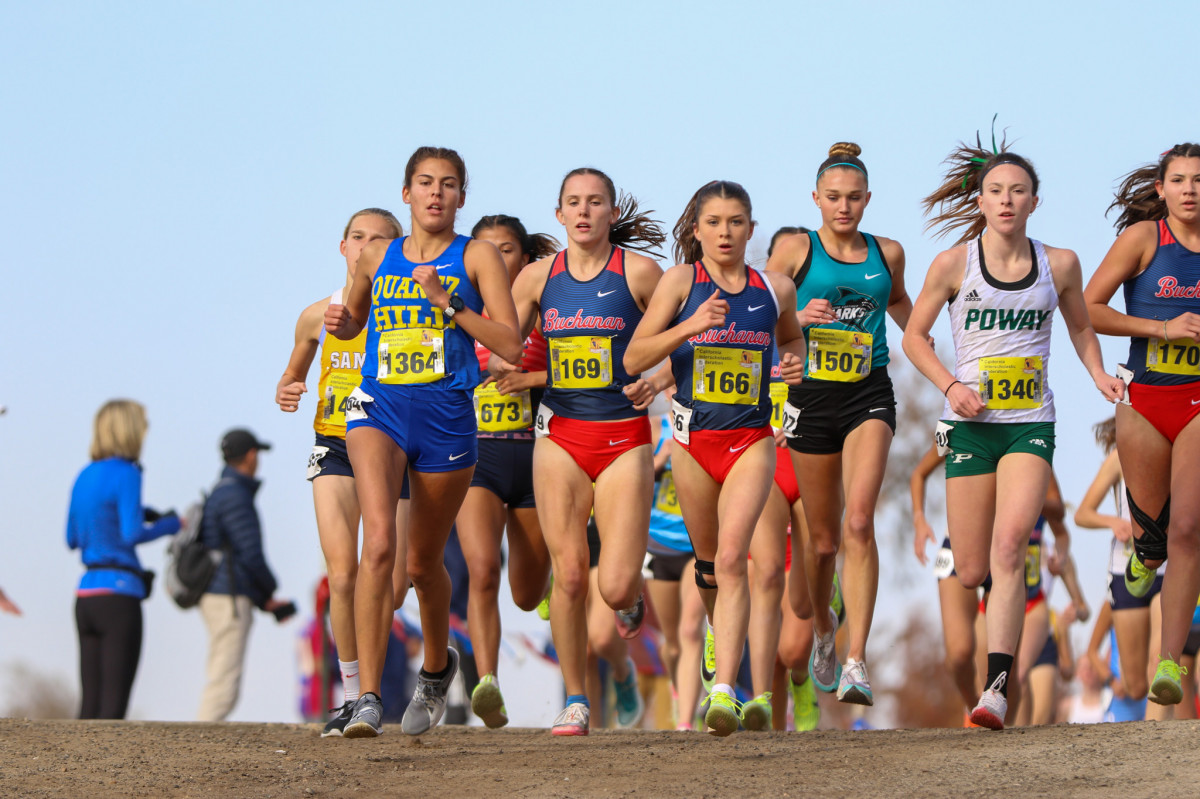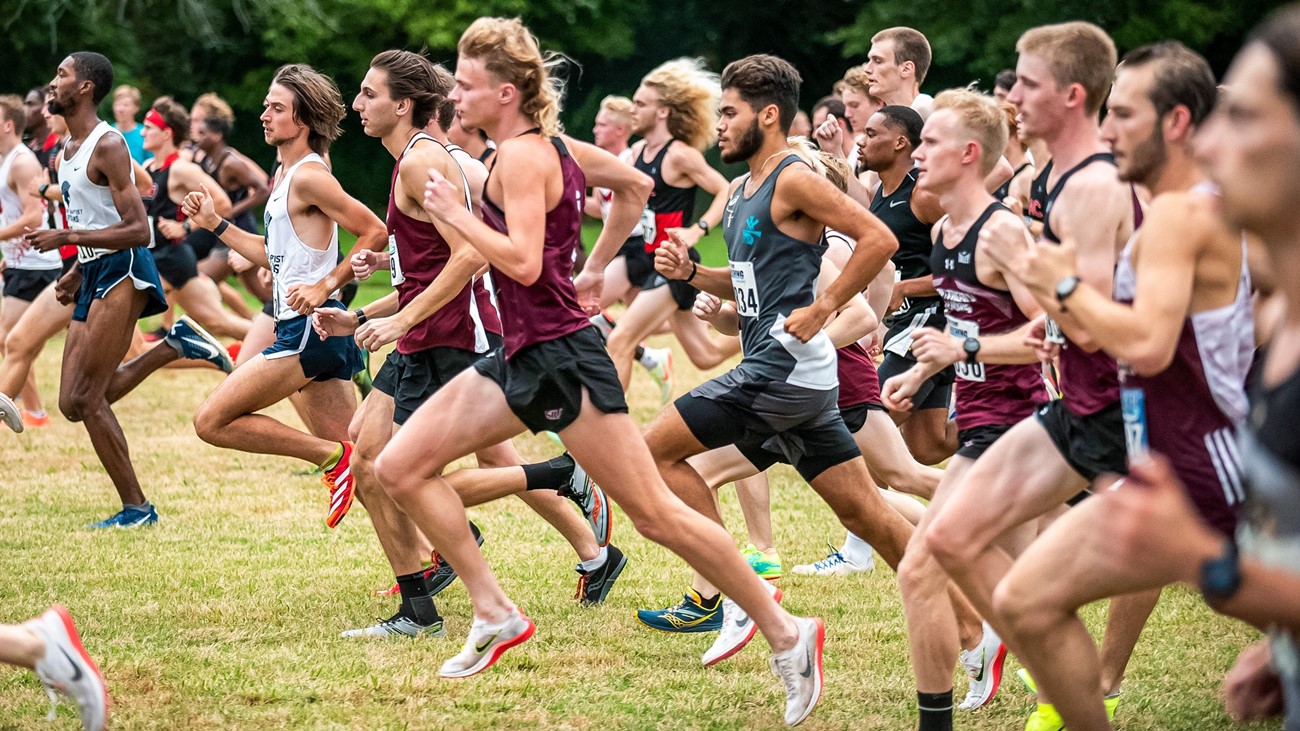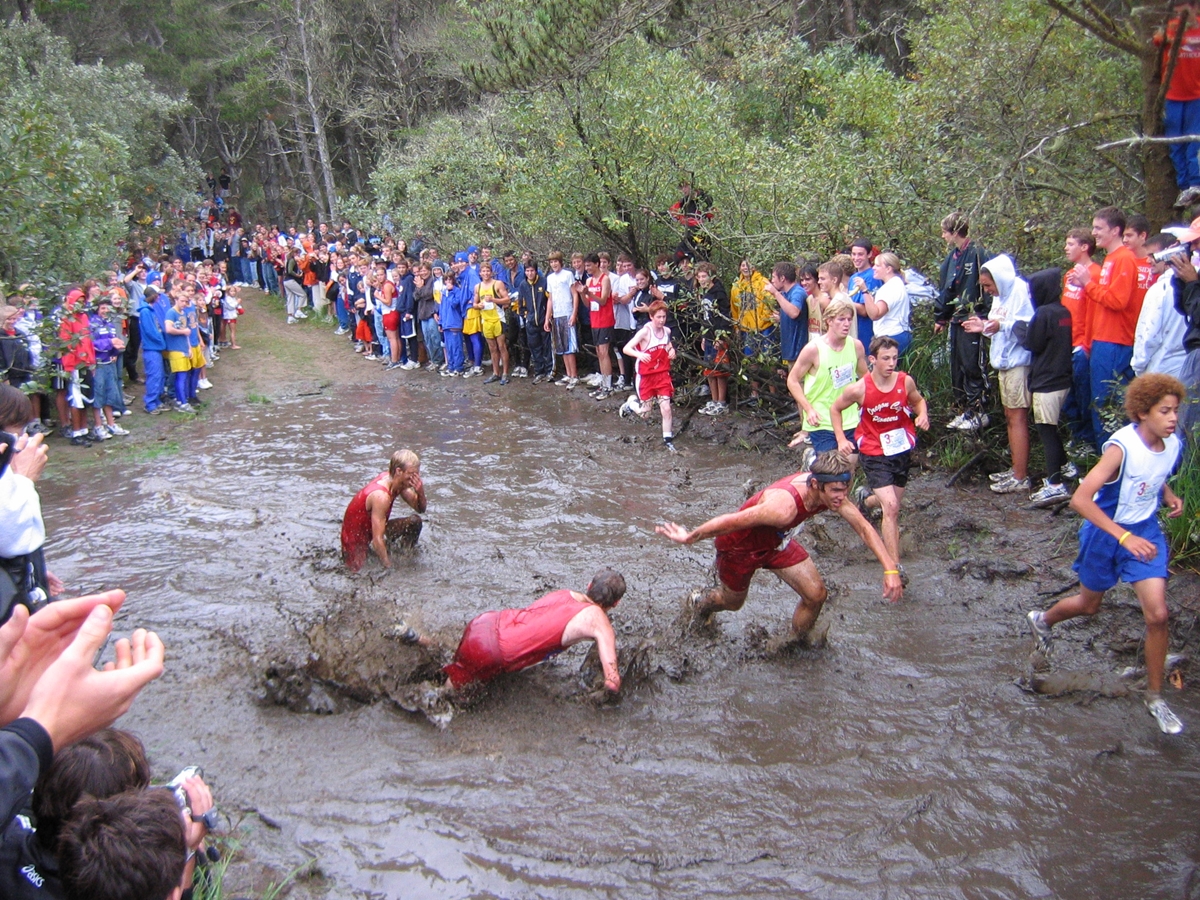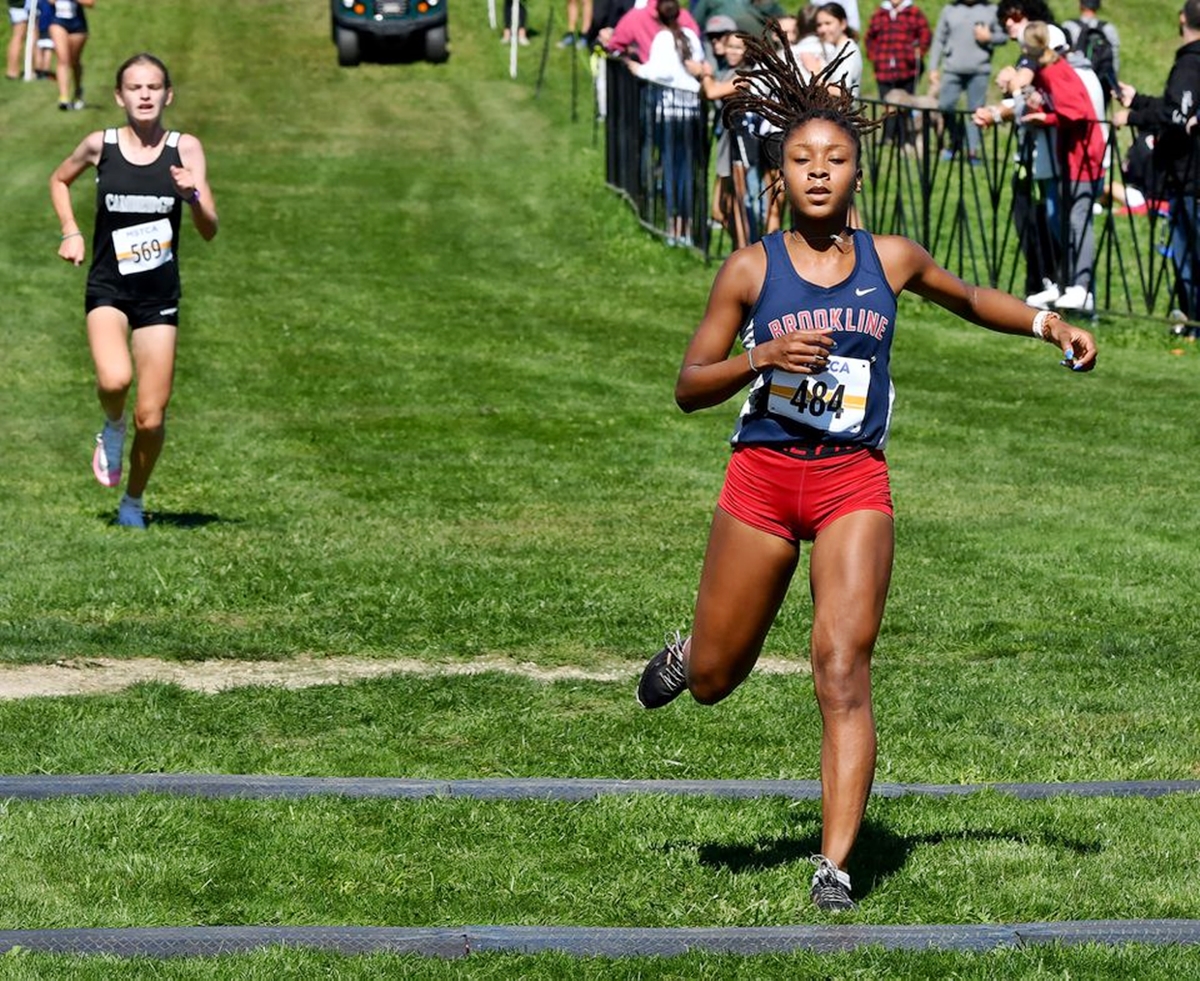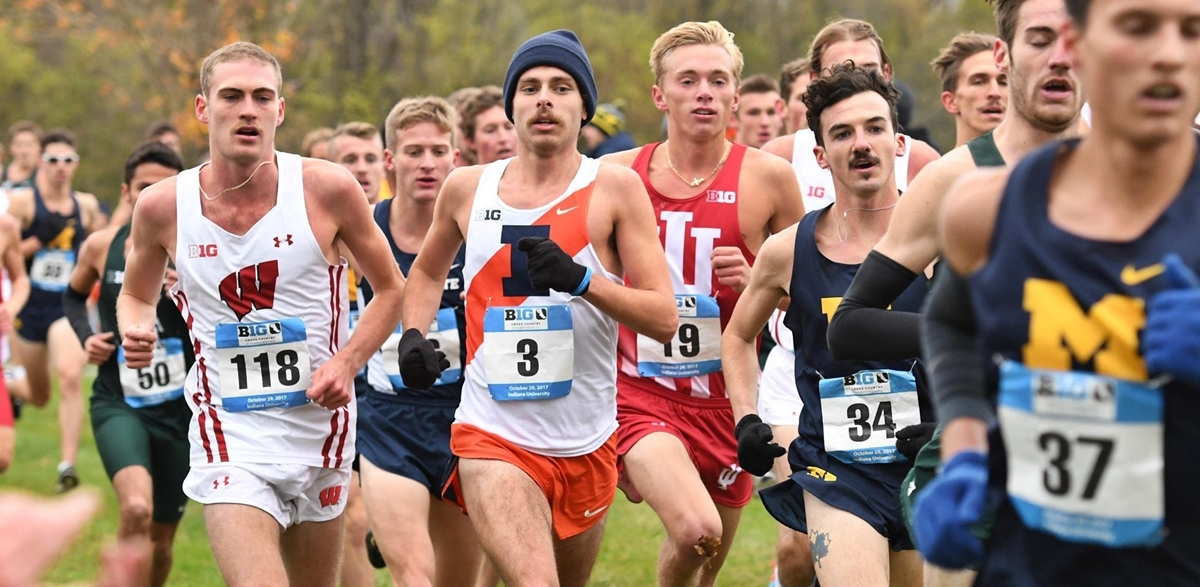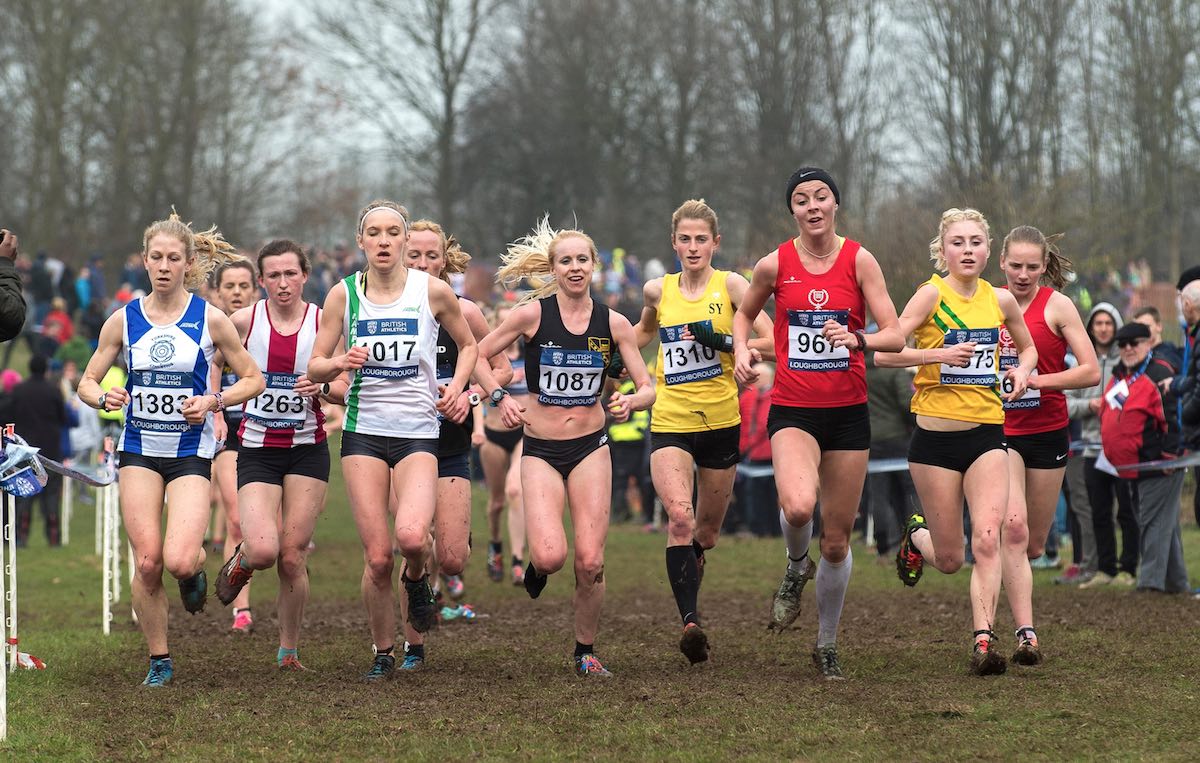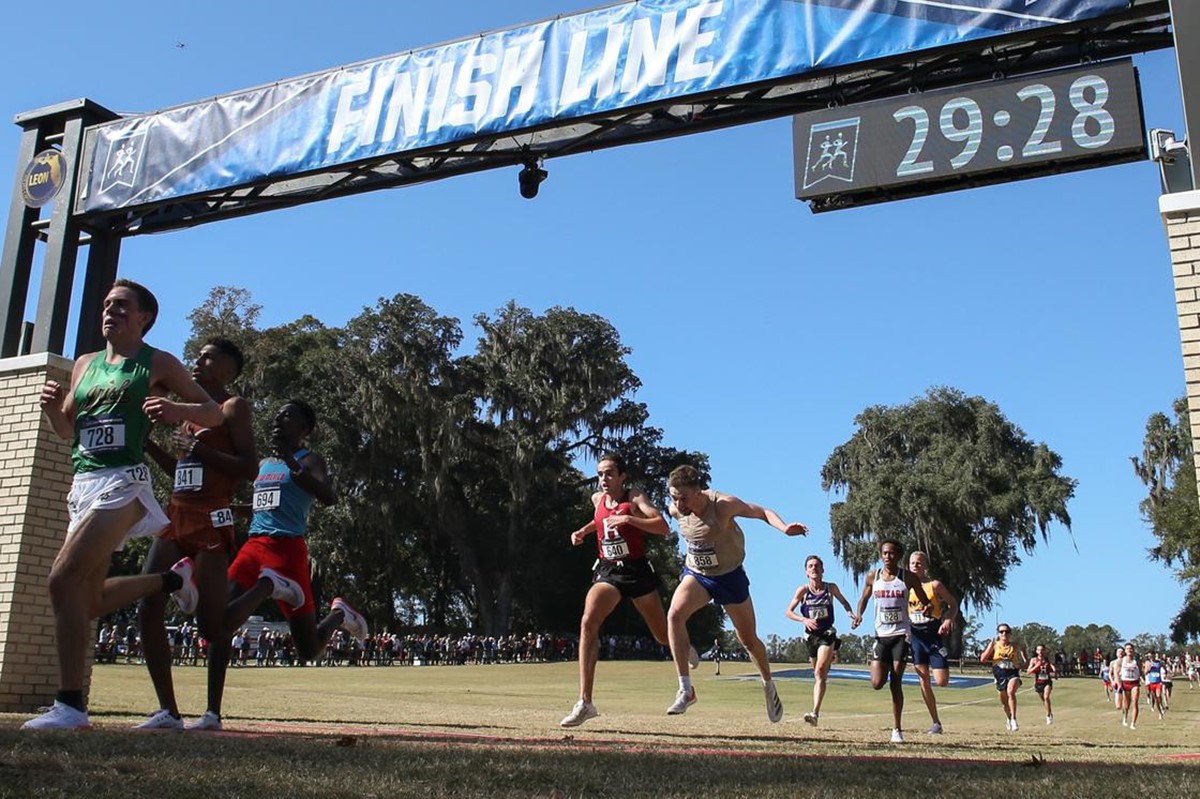Home>Misc>Featured>What Season Is Cross Country In High School
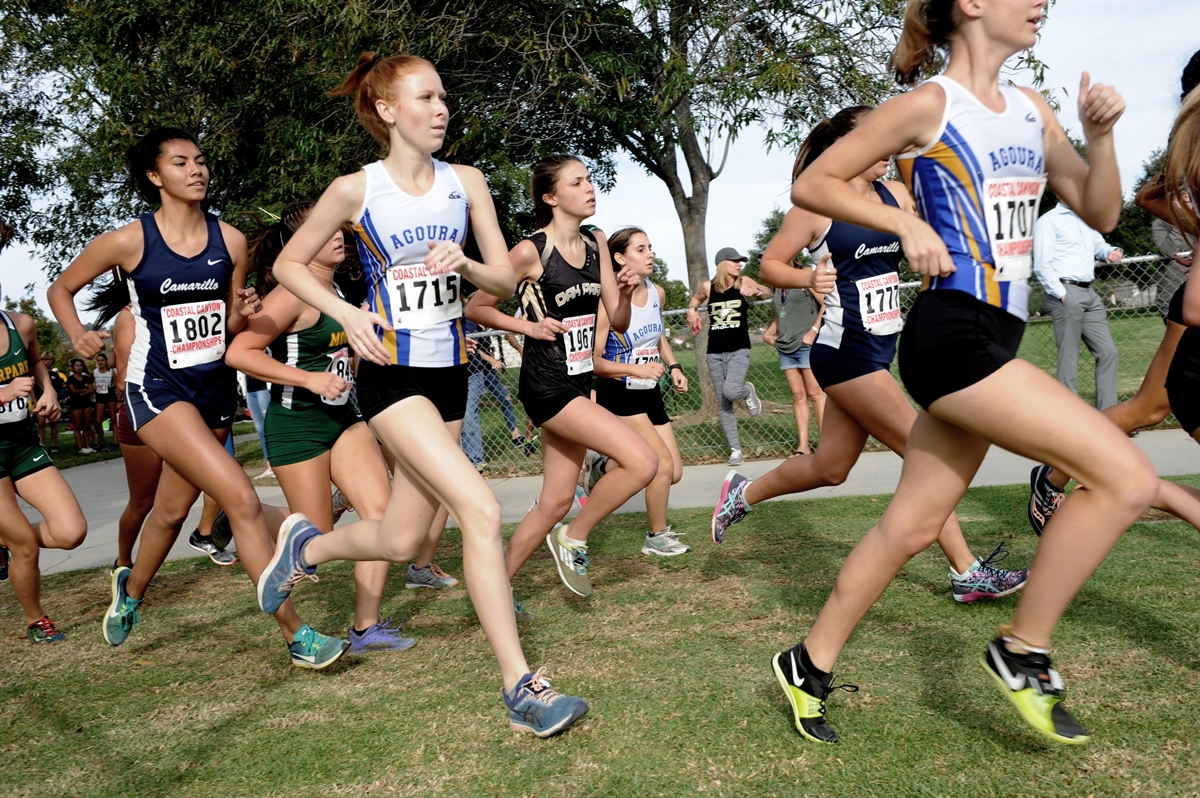

Featured
What Season Is Cross Country In High School
Modified: August 21, 2023
"Discover the featured high school cross country season and find out which season it takes place. Get all the information you need about cross country in high school."
Introduction
Cross country is an exhilarating and challenging sport that has gained immense popularity among high school athletes. It is a long-distance running event where participants compete on varied terrains, such as grass, dirt trails, and even asphalt. Unlike track and field, which has separate events for sprints, jumps, throws, and relays, cross country is solely focused on endurance running.
Participating in cross country not only provides physical benefits but also offers a host of other advantages for high school students. It helps in improving cardiovascular fitness, building muscular strength and endurance, and developing mental toughness. Additionally, it fosters teamwork, discipline, and time management skills, which are valuable life lessons that extend beyond the realm of sports.
In this article, we will explore the ins and outs of high school cross country. We will delve into the details of the cross country season, including its start date and duration. We will also discuss the typical schedule of cross country meets and the importance of training and preparation. Furthermore, we will highlight key strategies for success and address common challenges faced by cross country runners.
Whether you are a high school student considering joining the cross country team or a parent looking to understand more about the sport, this article is your comprehensive guide to high school cross country.
Benefits of Participating in Cross Country
Participating in cross country can have numerous benefits for high school students. Aside from the physical advantages, such as improved cardiovascular fitness and increased endurance, there are several other compelling reasons to join a cross country team.
First and foremost, cross country is a sport that encourages personal growth and development. It pushes athletes to step out of their comfort zones and overcome challenges. The mental fortitude required to complete long-distance races translates into other areas of life, fostering resilience and determination.
Teamwork is another crucial aspect of cross country. While running is often seen as an individual sport, cross country teams rely on the collective effort of each member. Runners motivate and support one another, creating a strong bond and a sense of camaraderie. This teamwork extends beyond race day, as teammates train together and celebrate each other’s successes.
Participating in cross country also nurtures discipline and time management skills. Balancing schoolwork, training, and other commitments requires effective planning and prioritization. This discipline can have a positive impact on academic performance and overall productivity.
Cross country also offers a unique opportunity to connect with nature. Unlike track events that take place within a confined space, cross country courses wind through picturesque landscapes, allowing runners to appreciate the beauty of their surroundings. This connection with nature can have a calming and rejuvenating effect, reducing stress levels and promoting mental well-being.
Furthermore, participating in cross country can enhance college applications. College admissions officers often value students who are involved in extracurricular activities and show dedication and commitment. Being a part of a cross country team demonstrates a passion for sports, discipline, and the ability to manage time effectively.
In summary, participating in cross country offers a multitude of advantages for high school students. From physical fitness to mental resilience, teamwork, and personal growth, the benefits extend beyond the finish line. So lace up your running shoes and embrace the rewarding journey that cross country has to offer.
Overview of High School Cross Country Season
The high school cross country season typically takes place in the fall, aligning with the changing colors of the leaves and the start of a new academic year. It provides an exciting and competitive atmosphere for runners to showcase their skills and represent their schools.
During the cross country season, teams from different schools compete in a series of meets and races. These meets can range from smaller local competitions to larger regional and state-level championships.
Typically, high school cross country seasons are organized into divisions based on factors such as school size and competitiveness. This allows for more equal matchups and ensures a fair competition for all participating teams and runners.
The length of the cross country season can vary depending on the region and school district. In some areas, it may last for as little as 6-8 weeks, while in others, it can extend up to 12 weeks or longer.
The highlight of the high school cross country season is often the championship races. These events bring together the top teams and runners from each division, vying for the coveted title of regional or state champions.
It is important to note that while the cross country season is primarily focused on team competitions, individual achievements are also recognized and celebrated. Runners compete not only to score points for their teams but also to improve their personal records and achieve personal goals.
Unlike other sports that have designated home and away games, cross country meets are typically hosted by various schools or organizations on neutral courses. This allows for fair competition and ensures that all teams have an equal chance to excel.
The cross country season also provides opportunities for athletes to qualify for higher level competitions, such as regional or state championships. These events bring together the top runners from a wider area, showcasing the best of the best in high school cross country.
Overall, the high school cross country season is a time for runners to showcase their skills, push their limits, and represent their schools with pride. It is a season filled with camaraderie, competition, and personal growth.
Start Date of the Cross Country Season
The start date of the cross country season may vary depending on the school district and region. In general, the season begins in late summer or early fall, typically around August or September.
One of the reasons for starting the cross country season during this time is to align it with the academic calendar. As the new school year commences, many students are eager to get involved in extracurricular activities, and cross country provides an excellent opportunity for them to channel their energy into a rewarding sport.
Additionally, starting the cross country season in late summer or early fall allows runners to acclimate to the weather conditions they will likely encounter during races. It gives them time to adjust to the potentially hot and humid conditions that are common in many areas during this time of year.
The start date may also be influenced by factors such as competition schedules, availability of training facilities, and the overall organization and logistics involved in planning the season.
It’s important for athletes and coaches to stay updated with the specific start date of the cross country season within their respective school or district. This information is typically communicated through school announcements, athletic department websites, or direct communication between coaches and team members.
While the start date may vary, it is crucial for runners to begin their training and preparations well in advance of the season. Many athletes engage in off-season conditioning programs to build their endurance and maintain their fitness levels. This allows them to hit the ground running once the official season begins.
Overall, the start date of the cross country season is determined by factors such as the academic calendar, weather conditions, and logistical considerations. It marks the beginning of an exciting and challenging journey for high school athletes as they embark on a season of training, competition, and personal growth.
Duration of the Cross Country Season
The duration of the cross country season can vary depending on the region and school district. In general, it spans anywhere from 6 to 12 weeks, with some seasons extending even longer.
The length of the season is determined by various factors, including competition schedules, school calendars, and the availability of training facilities. Coaches and event organizers strive to strike a balance between providing enough time for runners to train and compete while ensuring that the season does not overlap with other sports or major academic commitments.
In some cases, the cross country season begins in late summer and continues through the early weeks of fall. This allows for a longer season and ample time for athletes to develop their endurance, improve their race performances, and reach peak fitness levels.
At the other end of the spectrum, some schools or regions may have a shorter cross country season that focuses more on intense and concentrated competition. These may be compressed seasons that prioritize key meets, such as divisional or state championships.
It is important for athletes and coaches to carefully plan their training and competition schedule to make the most of the available time. This includes incorporating rest days, tapering periods, and strategic race selection to ensure that runners are at their best when it matters most.
It’s worth noting that the duration of the cross country season is not limited to official competitions and meets. Runners engage in regular training sessions throughout the season to maintain their fitness levels, improve their techniques, and build endurance.
Additionally, the season may also include off-season conditioning programs or cross-training activities during the winter or spring months. These activities help athletes stay in shape and prepare for the upcoming season, even when official races are not taking place.
Overall, the duration of the cross country season is variable but typically ranges from a few weeks to a few months. It is a time for athletes to push their limits, showcase their abilities, and work towards achieving personal and team goals.
Typical Schedule of Cross Country Meets
The schedule of cross country meets can vary depending on the region, school district, and the level of competition. However, there are several typical elements that make up the scheduling of these events.
Most cross country meets take place on weekends, allowing athletes to balance their academic responsibilities during the week. This also allows for spectators, including friends, family, and other members of the community, to attend and support the runners.
Meets are often held at various locations, including parks, golf courses, and other open spaces that provide suitable cross country courses. These venues are carefully selected to offer challenging terrain and fair conditions for all participants.
The schedule of cross country meets usually follows a staggered format, with separate races for different genders and age groups. For example, there may be races for female and male athletes, as well as junior varsity and varsity races.
In larger meets, there may be multiple divisions based on school size or competitiveness. This ensures that teams and runners are competing against opponents of similar skill levels, leading to fair and exciting races.
The length of a cross country meet can vary depending on the number of teams participating and the number of races scheduled. Some meets may consist of just a few races, while others can span the entire day with numerous races taking place back-to-back.
One key element of the cross country meet schedule is the order of races. Typically, the girls’ races are held first, followed by the boys’ races. This allows for a smooth progression of events and enables participants to cheer on their teammates.
The races themselves are often divided into different distances, with the most common distances being 5 kilometers (3.1 miles) for high school cross country. However, shorter or longer distances may be used depending on factors such as age group and competition level.
It’s important to note that the schedule of cross country meets may also include invitational meets, which are larger and more prestigious events that attract teams from a wider geographic area. These meets often showcase top runners and serve as a platform for athletes to test their skills against strong competition.
Overall, the schedule of cross country meets combines elements such as venue selection, staggered races, and race distances to provide an exciting and competitive environment for high school athletes. It is a series of events that showcases the dedication, talent, and perseverance of cross country runners.
Training and Preparation for Cross Country Season
Training and preparation are vital components of a successful cross country season. To excel in the sport, athletes need to develop a solid foundation of endurance, strength, and speed. Here is an overview of the key aspects of training and preparation for cross country.
Building aerobic fitness is a primary focus in cross country training. Long-distance runs at a comfortable pace form the backbone of endurance development. These runs gradually increase in duration and intensity to improve the body’s ability to sustain effort over the course of a race.
In addition to long runs, interval training and tempo runs are incorporated to develop speed and lactate threshold. Intervals involve alternating periods of intense effort with periods of recovery, while tempo runs are sustained efforts at a comfortably hard pace. These workouts improve anaerobic capacity and simulate race conditions.
Strength training is also important for cross country runners. It helps build muscular endurance, which is essential for maintaining form and preventing late-race fatigue. Exercises such as squats, lunges, planks, and medicine ball workouts target key muscle groups involved in running.
Proper nutrition and hydration are crucial for optimal performance and recovery. Cross country runners should focus on consuming a balanced diet that includes carbohydrates for energy, protein for muscle repair, and healthy fats for overall health. Staying hydrated before, during, and after workouts and races is essential to avoid dehydration and maintain performance.
Mental preparation plays a significant role in cross country. Developing mental toughness helps athletes push through pain, overcome challenges, and maintain focus during races. Techniques such as visualization, positive affirmations, and goal-setting can enhance mental resilience and race-day performance.
Rest and recovery are essential parts of any training program. Adequate sleep, proper rest days, and periodic recovery weeks allow the body to repair and adapt, reducing the risk of injury and improving performance. Cross training activities such as cycling, swimming, or yoga can be incorporated on rest days to maintain fitness without overloading the body.
Preparation for cross country also includes proper gear selection. Investing in well-fitting running shoes with good cushioning and support is crucial to avoid injuries. Lightweight and moisture-wicking clothing help runners stay comfortable during workouts and races. Additionally, wearing appropriate accessories like a hat, sunglasses, and sunscreen can protect against sun exposure.
Lastly, mental and physical preparation should be complemented by race-specific strategies. Familiarizing oneself with race courses during practice runs can provide an advantage, as runners can plan their pacing and strategize for challenging sections. Understanding race tactics such as positioning at the start and making strategic surges can give runners a competitive edge.
By prioritizing training, nutrition, recovery, and mental preparation, cross country runners can optimize their performance and excel in the sport. The dedication and commitment to these aspects of preparation are an integral part of a successful cross country season.
Importance of Off-Season Conditioning
Off-season conditioning plays a crucial role in the success of cross country runners. It is the period outside of the official competitive season where athletes focus on developing their fitness, strength, and skills. While the temptation may be to take a break and relax during this time, engaging in off-season conditioning brings several key benefits.
First and foremost, off-season conditioning allows runners to maintain and build upon the base fitness they attained during the competitive season. Cross country is a demanding sport that requires a high level of aerobic endurance and muscular strength. By continuing to train during the off-season, athletes can avoid detraining and sustain their fitness levels.
Another important aspect of off-season conditioning is injury prevention. The repetitive nature of running can lead to overuse injuries if the body is not properly conditioned and prepared. By engaging in cross-training activities, strength exercises, and flexibility training during the off-season, runners can address muscle imbalances, strengthen supporting muscles, and improve overall biomechanics, reducing the risk of injury when the competitive season resumes.
Off-season conditioning also provides an opportunity for athletes to focus on specific areas of improvement. During the competitive season, the emphasis is often on race performance and maintaining peak fitness. The off-season allows runners to target weaknesses, work on technique, and develop speed, strength, and endurance without the pressure of immediate race results.
Mental and emotional rejuvenation is another benefit of off-season conditioning. The demanding nature of competitive racing can take a toll on athletes both physically and mentally. The off-season provides a chance to recharge, rediscover the joy of running, and develop a healthy mindset. This rejuvenation can lead to renewed motivation, improved focus, and enhanced overall well-being when the competitive season resumes.
Off-season conditioning also fosters long-term development in cross country. By consistently training and improving during the off-season, athletes can set a foundation for long-term success in the sport. The progress made during this time carries forward to future seasons, enabling runners to perform at higher levels and achieve personal goals.
Participating in off-season conditioning also allows runners to diversify their training routine. Engaging in different activities such as swimming, cycling, or strength training helps prevent burnout and reduces the risk of overuse injuries. It also improves overall physical fitness and helps maintain a well-rounded athletic profile.
Off-season conditioning is an opportunity for athletes to work on their weaknesses, prevent injuries, rejuvenate mentally and physically, and lay the groundwork for future success. Investing time and effort in off-season training ultimately pays off when the competitive season arrives, allowing runners to perform at their best and reach their full potential.
Key Strategies for Success in High School Cross Country
High school cross country is a challenging and competitive sport that requires a combination of physical fitness, mental fortitude, and strategic approach. Here are some key strategies that can help athletes achieve success in high school cross country.
Consistency in Training: Consistency is essential in training for cross country. This involves maintaining a regular training schedule, sticking to the workout plan, and putting in the necessary effort day in and day out. Consistent training builds endurance, improves performance, and develops mental toughness.
Proper Nutrition and Hydration: Fueling the body properly is crucial for optimal performance in cross country. A well-balanced diet with sufficient carbohydrates, proteins, and healthy fats supports energy levels, muscle recovery, and overall health. Staying hydrated before, during, and after workouts and races is also vital to maintain performance and prevent dehydration.
Race Pacing: Understanding and mastering race pacing is key to success in cross country. Starting too fast can lead to early fatigue, while starting too slow can hinder the ability to make up time. Learning to gauge effort and manage pace throughout the race will help athletes maintain a consistent and sustainable pace.
Tactical Race Awareness: Developing race awareness allows runners to make strategic decisions during races. Identifying key sections of the course to push or conserve energy, understanding competitors’ strengths and weaknesses, and positioning oneself strategically can provide a competitive edge and maximize performance.
Mental Toughness: Cross country races can be physically and mentally demanding. Developing mental toughness is crucial to push through pain, overcome challenges, and maintain focus during races. Techniques such as visualization, positive self-talk, and goal-setting can enhance mental resilience and help athletes stay strong throughout the race.
Teamwork and Support: Cross country is often seen as an individual sport, but teamwork and support from teammates play a significant role in achieving success. Encouraging and supporting fellow runners, sharing tips and strategies, and fostering a positive team environment can boost morale and bring out the best in each athlete.
Adaptability: Cross country races can present various challenges, including different terrains, weather conditions, and competition levels. Being adaptable and prepared for different race scenarios allows athletes to adjust their strategy, maintain composure, and perform well under any circumstances.
Recovery and Rest: Rest and recovery are just as important as training in cross country. Adequate sleep, rest days, and periodic recovery weeks allow the body to repair and adapt, reducing the risk of injury and improving performance. Prioritizing rest and recovery ensures that athletes are fresh and prepared for important races.
Goal-setting: Setting clear and realistic goals is essential for motivation and focus in cross country. Whether it’s beating a personal record, qualifying for championships, or helping the team succeed, having specific targets provides a sense of purpose and direction throughout the season.
Enjoyment and Passion: Above all, maintaining a sense of enjoyment and passion for the sport is crucial in cross country. Embracing the challenges, appreciating the opportunity to run in beautiful settings, and savoring the sense of accomplishment can make the journey more fulfilling and lead to long-term success.
By implementing these key strategies, high school cross country athletes can improve their performance, achieve personal goals, and experience the joy and satisfaction that comes with success in the sport.
Common Challenges Faced by Cross Country Runners
Participating in cross country comes with its fair share of challenges. From the physical demands of endurance running to the mental hurdles of competition, cross country runners encounter various obstacles on their journey. Here are some common challenges faced by cross country runners.
Endurance and Fatigue: Cross country races often involve long distances, demanding a high level of aerobic endurance. Runners need to build their stamina and train their bodies to withstand the physical demands of extended periods of running. Pushing through fatigue and maintaining a strong pace can be challenging, particularly during the latter stages of a race.
Navigating Different Terrains: Cross country courses can consist of grass, dirt trails, gravel, and even asphalt. Each surface requires different footing and tactics, making it essential for runners to adapt quickly and efficiently. Dealing with uneven terrain and unpredictable weather conditions can add to the difficulty, requiring agility and mental focus.
Mental Toughness: Cross country is not only a test of physical fitness but also of mental fortitude. Enduring the pain, overcoming mental barriers, and staying motivated during challenging races can be mentally exhausting. Maintaining a strong mindset and developing strategies to push through mental hurdles are key to success in cross country.
Weather Conditions: Runners often face a wide range of weather conditions during cross country races, including extreme heat, cold, rain, or wind. Battling through adverse weather can be physically and mentally draining, requiring runners to adapt their race strategy and be prepared for challenging conditions.
Training Intensity and Injury Prevention: Balancing rigorous training with injury prevention is a constant challenge for cross country runners. The high mileage and intensity of training sessions increase the risk of overuse injuries. Understanding proper training techniques, listening to the body, and incorporating rest and recovery are crucial for avoiding injuries and maintaining a consistent training regimen.
Time Management: Juggling academics, extracurricular activities, and training can be overwhelming for cross country runners. Balancing schoolwork, social commitments, and rest becomes essential to avoid burnout and maintain a healthy lifestyle. Effective time management skills and prioritizing responsibilities help runners stay on track both academically and athletically.
Competition and Pressure: The competitive nature of cross country races can create pressure and anxiety for runners. The desire to perform well and meet personal or team expectations can add stress. Managing race-day nerves, staying focused on individual goals, and embracing the spirit of competition can help runners navigate the pressure effectively.
Inadequate Support or Resources: Some cross country runners may face challenges related to limited access to proper training facilities, coaching, or equipment. In such cases, finding alternative solutions, seeking support from teammates, or exploring opportunities for improvement become vital for progress.
Team Dynamics: While cross country is often seen as an individual sport, it is also a team-based activity. Building healthy team dynamics, supporting teammates, and fostering a positive team environment can be a challenge. Developing effective communication, empathy, and a sense of camaraderie among team members contribute to a more positive and cohesive experience.
By acknowledging these common challenges and proactively addressing them, cross country runners can develop resilience, overcome obstacles, and make the most of their training and racing experiences.
Conclusion
High school cross country is a sport that offers numerous benefits for athletes. From improving physical fitness and mental resilience to fostering teamwork and personal growth, cross country provides a rewarding and challenging experience. Understanding the key aspects of the cross country season, from its start date and duration to the typical schedule of meets, is important for athletes and their supporters.
Equipped with knowledge of training and preparation strategies, cross country runners can lay a solid foundation for success. Consistency in training, proper nutrition, race pacing, and mental toughness are all crucial elements in achieving peak performance. Additionally, teamwork, adaptability, and goal-setting contribute to a well-rounded and fulfilling experience in the sport.
However, cross country also comes with its share of challenges. Endurance and fatigue, navigating different terrains, mental toughness, and managing time are common obstacles that runners must confront. Overcoming these challenges requires dedication, perseverance, and effective strategies for injury prevention and mental resilience.
Ultimately, cross country is not just about the races, but about the journey of self-discovery and personal growth. It is about finding joy in pushing one’s limits, appreciating the beauty of nature, and developing lifelong skills. Whether one is a high school athlete considering joining the team or a parent supporting their child, understanding the intricacies and demands of cross country will allow for a more enriching and rewarding experience.
So lace up your running shoes, embrace the challenges, and make the most of your cross country season. Whether you’re striving for personal records, aiming for team success, or simply enjoying the thrill of competition, cross country offers a unique and empowering experience that will leave a lasting impact.


